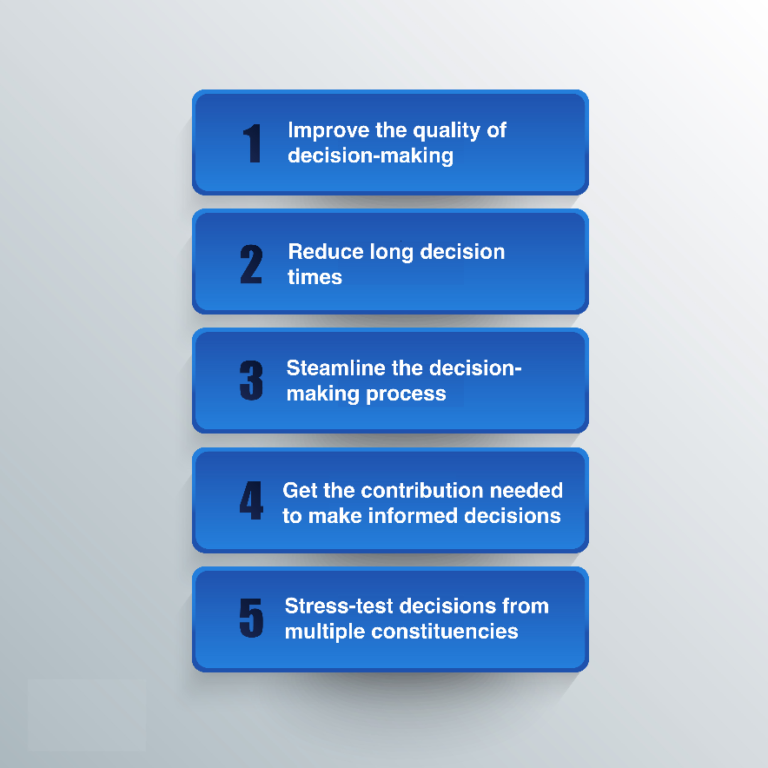The decisions involved in the execution of strategy usually require the organizational alignment of many people. For large organizations, the responsibilities of decision-making can span several departments working in collaboration. Lack of role clarity not only affects the quality decision-making but can also slow down the entire process of strategy execution. In these situations, the assignment of clear decision rights can be used to allocate authority effectively. The questions that come up are two: “How do they work?” and “What are the advantages?”
HOW DECISION RIGHTS WORK
Decision rights assist businesses in organizing decision-making by setting clear roles and responsibilities for all the people involved. The assignment of decision rights revolves around a specific decision and each person involved in the decision is assigned one of four roles:
- R – Is responsible for the decision
- A – Approves a decision made by another
- C – Is consulted prior to making the decision
- I – Is informed following a decision
Five advantages explain why decision rights are important tools of execution.
The Advantages of Clear Decision Rights

THE BENEFITS
The benefits of assigning clear decision rights are evident. First, the process cuts through the complexity of decision-making by decomposing the decision into constituent parts: i.e. input, evaluation, and decision. Second, clear decision rights cut through the confusion of who does what by assigning clear roles and responsibilities. Ultimately, clear decision rights delegate authority and ensure that important decisions are made quickly and effectively, resulting in prompt strategic action and organizational alignment.

